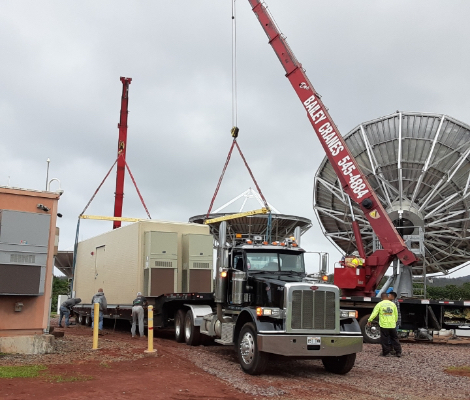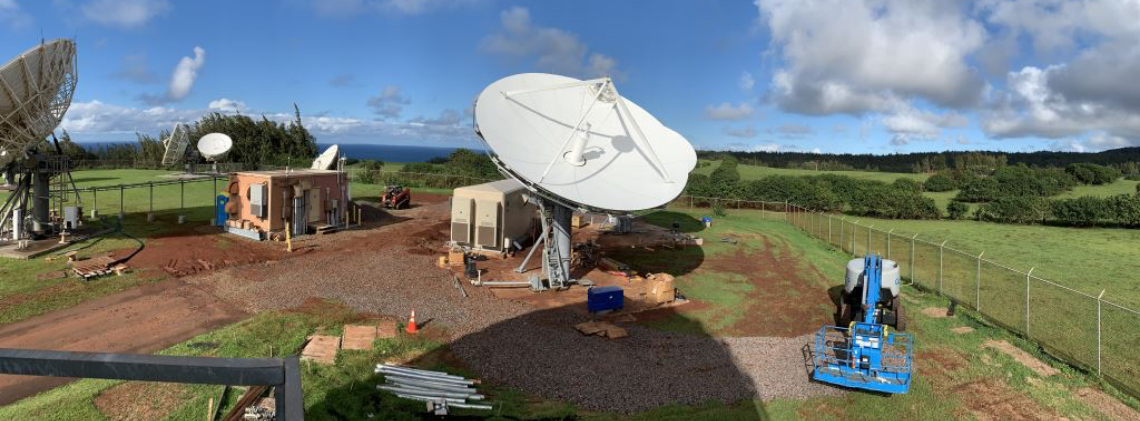Satellite Equipment ShelterCase Study
Project Overview
STS Global, a leader in satellite and terrestrial telecommunications systems, partnered with Shelter Works to deliver a rugged, insulated fiberglass equipment shelter for a Fixed Earth Station. The station, located high on a hill in Hawaii, supports two 9-meter satellite dishes servicing the island’s television, Internet, and communications infrastructure.
The remote location, harsh environmental conditions, and evolving technical requirements made this project a challenge. Shelter Works’ ability to provide a durable, highly-customizable fiberglass telecom shelter proved essential to the project’s success.
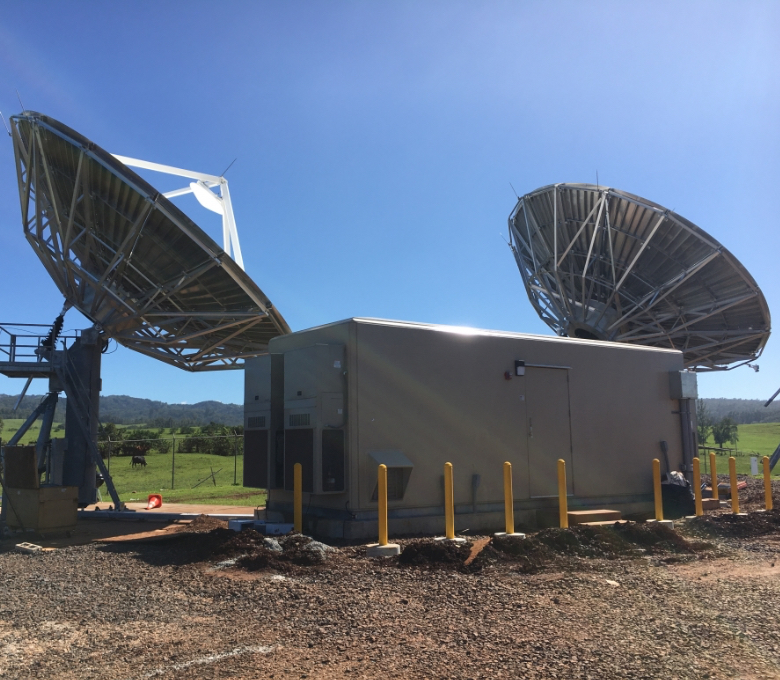
Harsh Climate Conditions:
Positioned at high elevation for optimal satellite reception, the shelter needed to be able to withstand Hawaii’s corrosive salt air, high humidity, strong winds, and frequent rain. Shelter Works utilized its proprietary FiberBeam™ technology to provide exceptional structural integrity and resistance to environmental degradation.
Thermal and Moisture Control:
To manage internal temperatures and prevent moisture-related equipment failure, the shelter was built with 2” foam insulation in the walls and 3” in the roof. Floor cavities were filled with 1-1/2” foam core insulation, and the floor itself was constructed of FRP-encapsulated ¾” marine-grade plywood covered with durable vinyl tile. Two 2-ton air conditioners work in conjunction with each other to maintain a consistent operating environment.
Structural Base and Grounding:
A steel skid base built with C6 perimeter and C5 cross supports at 12” centers provided a rigid foundation. The design included grounding studs and lifting eyes for safe handling and easy on-site installation.
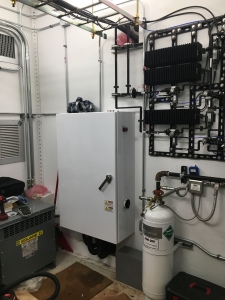
Technical Integration Requirements:
Due to the complexity of the equipment and need for precise installation, the shelter was fully assembled and pre-wired at Shelter Works’ St. Louis facility. STS Global sent a team of specialists who completed radio equipment integration over a two-week period. This approach ensured quality control and minimized onsite setup time.
Remote Island Delivery:
Transporting a fully outfitted 22,000-pound shelter to Hawaii required meticulous planning. The shelter was trucked from St. Louis to San Diego, where it met one of only two available ships that could accommodate the load. A 38,000-pound lowboy flatbed was used, triggering oversized load classification and requiring special holiday travel permits.
Upon arrival, the shelter had to be transported up a rugged, rain-soaked access road to the installation site. The team mitigated ground instability by importing six truckloads of gravel before using two cranes to offload the unit onto a concrete pad.
Despite extreme logistical and environmental challenges, Shelter Works delivered a turnkey, fully customized fiberglass telecom shelter that met all project specifications. The collaboration enabled STS Global to meet the tight timeline and performance expectations set by SES.
Dave Hershberg, CEO of STS Global, praised the partnership:
“The cooperation from the Shelter Works team was outstanding. This is a company with the right culture for complex, highly custom engineered work — and they delivered at a very reasonable cost.”
This project highlights Shelter Works’ ability to engineer and deliver advanced fiberglass enclosures for telecom infrastructure in the most demanding environments. From high-elevation deployments to extreme humidity and tight shipping timelines, Shelter Works provides the reliability and customization telecom professionals require.
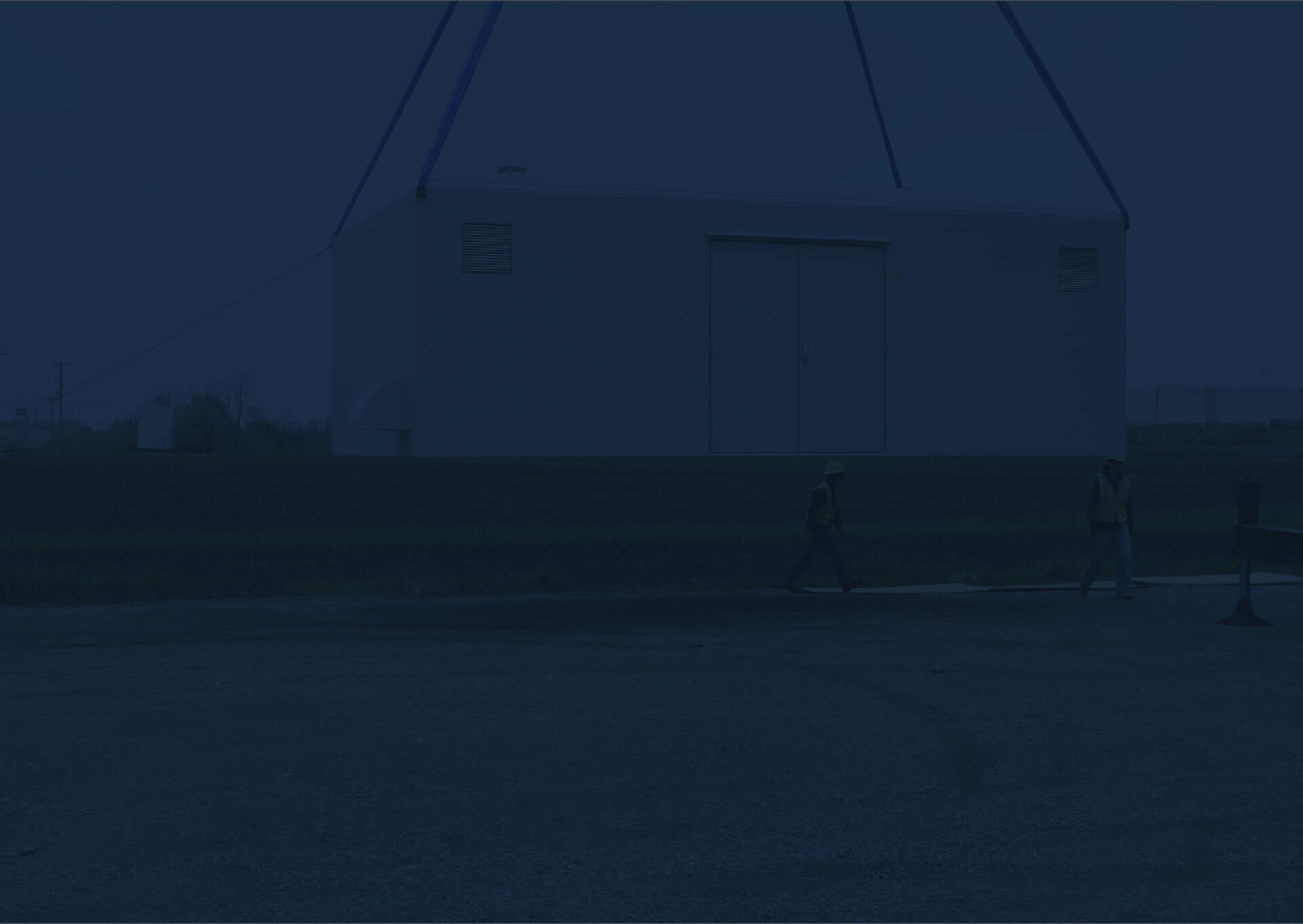
“This was a very difficult job, with ever-changing specifications, a tough schedule and challenging location. We chose the right company to partner with us and help navigate every obstacle; we will definitely be using them again.”
Dave Hershberg, CEO of STS Global
